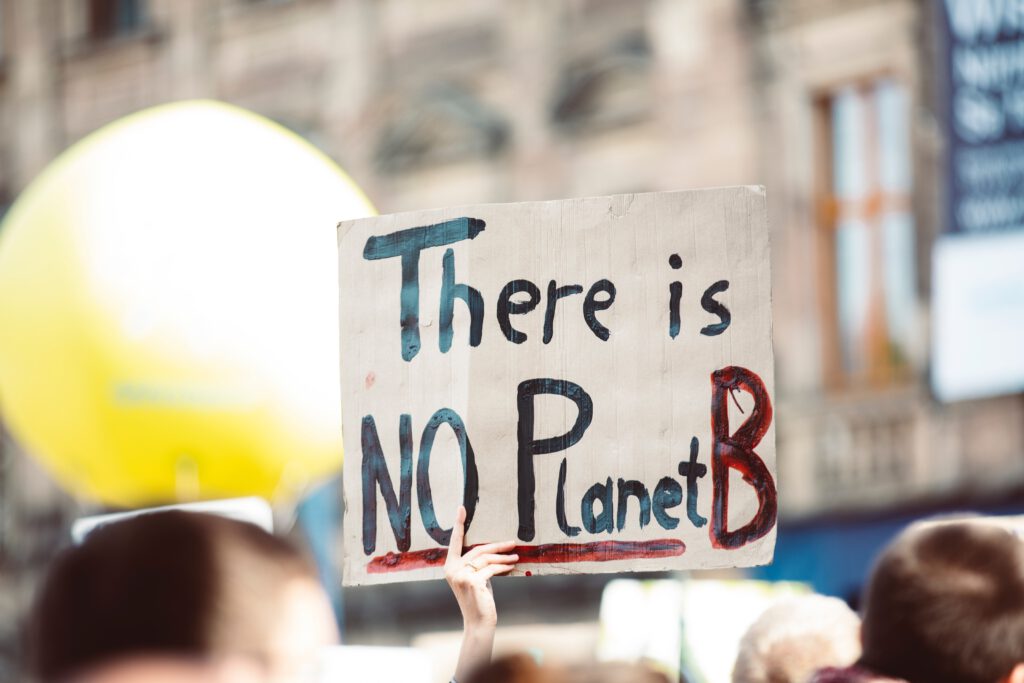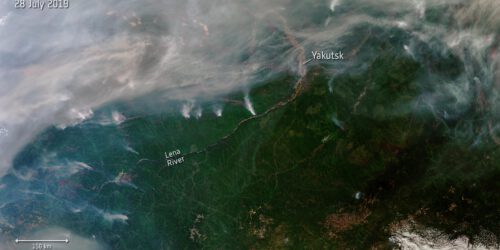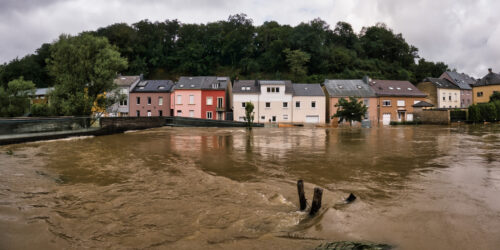Historians for Future on the IPCC Report: Part 4, What Can Be Done?

This post is part of a H4F series on the Intergovernmental Panel on Climate Change (IPCC) Sixth Assessment Report, and what it means for the global climate, past and future.
Last Monday, the IPCC released the second part of its Sixth Assessment Report (AR6). Focusing on the impacts of global warming and efforts to adapt to it, this Working Group II contribution lays bare how climate change is being felt across the planet.
Like we have been doing for the first part of AR6, we also plan to rephrase this most recent report in terms that are easier to understand, opening up these reports to anyone interested in climate action.
In this post, we will continue our analysis of the IPCC Working Group I Report’s Summary for Policymakers, and focus on its last section:
Section D on “Limiting Future Climate Change” is divided into two parts. The first part focuses on how stabilizing global warming caused by humans depends on whether net-zero emissions targets can be reached. In other words, the climate system will continue to warm without CO2 emissions reaching net zero, along with significant reductions in other greenhouse gas emissions.
– D.1.1 reaffirms with high confidence that global warming is a direct consequence of human-caused CO2 emissions accumulating in the atmosphere.
The ratio of surface warming to emission rates is measured through the so-called Transient Climate Response to cumulative carbon Emissions (TCRE), a metric to estimate the response of global temperatures to increasing CO2 emissions. For every 1000 gigatonnes of CO2, global surface temperatures will likely increase by 0.27°C to 0.63°C (see Figure 1). This shows that any temperature increase can only be halted by achieving net zero.
– D.1.2 notes that humans have already emitted an estimated 2,390 Gt (= 2,390 billion tonnes) of CO2 since 1850. The remaining “carbon budget” specifies the maximum amount of CO2 we can emit in order to still stabilize global warming at a particular level. This amount is calculated on the basis of a number of factors, including the TCRE.
– D.1.3 states how the factors to calculate the remaining carbon budget have been reassessed in this report. Estimates are similar to the ones made in the IPCC’s 2018 Special Report on Global Warming of 1.5°C (SR15), but larger compared to the previous assessment report completed in 2014, the Fifth Assessment Report (AR5), because of methodological improvements.
– D.1.4 notes with high confidence that carbon dioxide removal (CDR)–also known as negative emissions–has the potential to take out CO2 from the atmosphere and store it in reservoirs in durable ways. Measures to do so include “nature-based solutions,” such as reforestation, land-use change, and other ecosystem-based approaches, as well as more industrial processes, such as direct air capture and bioenergy with carbon capture and storage (BECCS).
While deemed a key part to reaching net-zero emissions targets, CDR has a range of side effects that can affect biogeochemical cycles and also influence the availability and quality of water, the production of food, and biodiversity in both negative and positive ways.
– D.1.5 states how CDR helps decrease the concentration of CO2 in the atmosphere and also reverse ocean acidification. The amount of lower CO2 levels through CDR measures would offset any increase in emissions.
– D.1.6 notes with high confidence that if net zero would be achieved and sustained, then this could gradually reverse global warming caused by CO2 levels. At the same time though, it would not necessarily influence other effects of climate change. It could take anywhere from a couple of centuries to millennia for, for instance, higher sea levels to lower again.
– D.1.7 notes with high confidence that other greenhouse gas emissions contributing to air pollution besides CO2 – such as methane and other ozone precursors – also lead to global warming in all emission scenarios [for more on the scenarios, see our Part 2].
– D.1.8 reiterates what this first part was all about: global warming will not stabilize unless – at the very least – net zero is achieved.
The second part of Section D focuses on two of the scenarios as discussed in Section B: SSP1-1.9 and SSP1.2.6. Both are scenarios that start in 2015 and have low and very low greenhouse gas emissions. The former is the IPCC’s most optimistic scenario with net zero being reached around 2050; the latter is the next-best one in which global emissions are also cut severely–albeit not as fast–with net zero being reached after 2050.
Both emission scenarios demand immediate and urgent global action in order to virtually eliminate emissions around or after 2050. As we explained in Part 2, this requires annual emission levels to begin to significantly decrease in the next few years. The report notes that being on SSP1-1.9 or SSP1-2.6 rather than one of the scenarios with high or very high greenhouse gas emissions would see noticeable differences in global warming within about 20 years.
– D.2.1 notes how COVID-19 lockdown measures temporarily helped to improve air quality in 2020. At the same time though, the concentration of CO2 in the atmosphere continued to increase.
– D.2.2 states that even in scenarios with low and very low greenhouse gas emissions such as SSP1-1.9 and SSP1.2.6, improvements in air quality would not necessarily meet the air quality standards of the World Health Organization in the near term (2021-2040).
– D.2.3 points to how the rapid and sustained emission reductions in the SSP1-1.9 and SSP1.2.6 scenarios would limit the risks and impacts of human-caused climate change more significantly than in the high emission scenarios. It’s likely that such emission reductions would already lead to noticeable differences in global temperature levels before 2040.
– D.2.4 notes that the SSP1-1.9 and SSP1-2.6 scenarios would strongly reduce the severity of climate impacts (= climate-impact drivers, or CIDs) after 2040 [for more on CIDs, see our Part 3]. In other words, the worst climate impacts, including extreme heat and flooding, would be avoided by strongly reducing emission levels in the near term.
While some devastating consequences of climate change are already inevitable, Section D offers a glimmer of hope: there’s still a short window to prevent things from getting even worse. Because if global warming goes beyond 1.5°C, then this will cause fundamental changes to the Earth’s climate that will be both dramatic and dangerous.
Yet, as Section D lays out, it’s not too late to slow the pace of climate change–as long as we act now.



